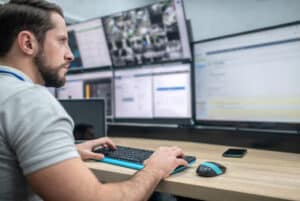Worker productivity has been in the headlines recently. One reason is the easy access employers have to the many technologies that can monitor employees — from software that tracks when an employee swipes their badge at work to software that notes how long someone is at their computer and what they do while they are there. Another is a certain manifesting distrust of workers, particularly the increased numbers of remote workers. Either way, there’s impetus for employers to actively watch what their employees are doing.

Companies that engage (or that may soon engage) in surveillance should carefully consider their reasons for doing so. Is it to keep tabs on what employees are doing on company time? Is it an effort to streamline processes and improve productivity? Is there some other reason? It is also important to consider whether the negative psychological effect on employees (who may feel uncomfortable being monitored) outweighs the value of the data gathered.
Employers generally do not have a legal duty under federal law to disclose the use of surveillance software, but state law may impose different requirements. For instance, under federal law, private emails can be monitored if they are on company devices, but that may not be true under state law. There may also be differences between federal and state law regarding social media monitoring, conversation recording and video monitoring.
Best practices
In addition, it is good cultural practice to tell employees they are being surveilled. Employees are more likely to accept surveillance if the company’s communications are transparent. Consider offering these assurances:
- Employees should understand what activities will be monitored. According to the Electronic Communications Privacy Act of 1986, employers can track activity (including monitoring files, downloads, internet usage and social media activity) on any device they give employees. As mentioned above, be conscious that state law may differ.
- Let employees know if monitoring is being used for developmental purposes — that is, to determine which apps employees are using and how often — in service of better workflow.
- Assure employees that the information collected through monitoring will never be part of formal performance evaluations.
- Be sure employees know which devices the software will monitor — including that their private devices will not be surveilled.
- Communicate the company’s policies around privacy and data collection.
- Remind employees that some tracking software helps prevent cyberattacks.
- Assure employees that everyone is being monitored in the same way.
How BlueStone Services Can Help
If your company is thinking about using employee-monitoring technology, we can help be sure you comply with all relevant federal and state laws. Contact us today to get started.




